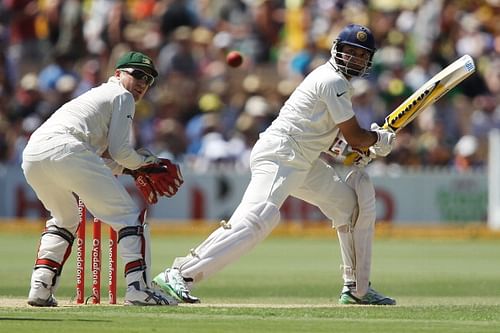
VVS Laxman: The rescue ranger who walked tall amid the ruins

“When Laxman bats you just stand at the other end and watch and tell yourself not to get carried away.”
Coming from the legendary batting genius Sachin Tendulkar, the statement is worth its weight in gold, and very apt for a man who made Test cricket as interesting as a high-voltage encounter between India and Pakistan.
He had the choice of becoming a doctor like his parents, or choose the difficult journey towards becoming a world-class cricketer for the nation. Giving into his passion, he opted for the latter, and the game became all the more rich owing to his decision and subsequent triumphs.
Vangipurappu Venkata Sai Laxman, the bête noire of Australia and one of the greatest batsmen to have played the longest version of the game for India, turns 39 today. And just like he used to do on the field, he would prefer a quiet celebration with his close ones instead of a well-publicised, glitzy affair.
There is something about the way the Hyderabad cricketers bat – it’s like a coaching clinic has been brought to life right before your eyes, in the comfort of your living room. If Mohammad Azharuddin was wristy, Laxman took the art to newer levels. Those sinuous, supple limbs enabled him to make his on-side play a virtual mirror-image of the former Indian captain, who he rates as one of his cricketing idols.
At the crease, Laxman was grace and fluidity personified; a steady stance, coupled with a textbook technique, would have classed him as one among the many wielders of the willow who had sizzled briefly with promise. What made him a treat to watch was the natural flair and elegance behind the way he played his shots on both sides of the wicket. His drives on the leg-side, the short-arm pulls and leg-glances were enough to leave everyone transfixed with admiration for his craft. Laxman also played the cover drive and the straight drive like a seasoned professional early in his international career, leading the colourful Geoffrey Boycott to rate him as one of India’s best against the new ball.
Perhaps it was this ability that prompted the Indian selectors to move him into the opening slot for Test matches – a move that did not work out as well as they had hoped for. It coincided with a relatively lean run of form for the batsman, who was unable to cement a place in the-then star studded middle order. In the limited-overs format, too, the Hyderabadi wizard struggled for both form and consistency. He was dropped from both sides in 1998.
Disappointed but determined, Laxman toiled away in first-class cricket, making the 1999 Ranji Trophy tournament his own with eight centuries in nine matches. It forced the selectors to recall him for the 2000 tour to Australia, which turned out to be a disaster for the entire squad. Glenn McGrath was in one of his destructive moods on that tour, and Laxman was the only one who held firm against him and Shane Warne in the third and final Test, making a glorious 167 as opener.
One would think that the century alone was sufficient for the young batsman to force his way into the top order. But Laxman realized he wasn’t cut out for that role, and preferred to return to the hinterlands of domestic cricket, re-inventing himself as a middle-order player. It took the arduous struggle of a year before he returned to the Test side in late 2000.